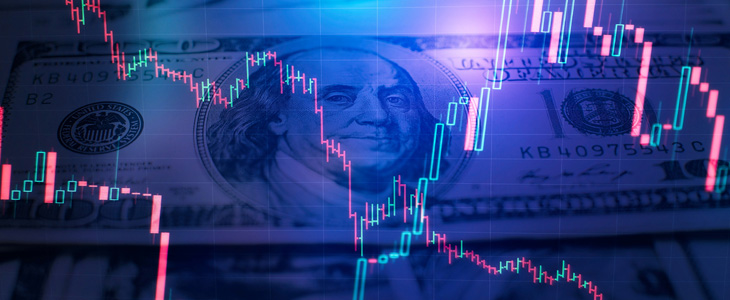
Picture a chase scene in an action movie: Hounded by the good guy, the bad guy is running between buildings and crossing streets without waiting for red lights. Suddenly, he reaches a market and disappears into the crowd. Similarly, money launderers exploit the financial markets to blend in with their surroundings and evade detection.
Considering recent penalties and fines imposed on financial institutions―such as Interactive Brokers LLC, a registered broker-dealer that was fined $38 million for repeatedly failing to file suspicious activity reports1 ―it is of utmost importance to understand the ways in which criminals are abusing trading securities to move the proceeds of crime.
This article will discuss why and how money launderers take advantage of the particularities of the securities sector and will focus on the layering stage of money laundering through securities trading in secondary markets.
The Perfect Playground
Think back to childhood, what would be the best place to play hide-and-seek? What about a vast, congested and maybe cluttered space where it is easy to move behind a cover to avoid being discovered? This exactly describes financial markets, which makes them the perfect playground for a game of hide-and-seek. The following factors make financial markets susceptible to money laundering:
-
- Transborder: Capital markets have no geographical limit and witness hourly trading activities across jurisdictions in various markets and asset classes.
- Ease of access: They are easily accessible especially with the boom of internet-based trading accounts and electronic trading applications.
- Anonymity: They provide a certain degree of anonymity. In fact, money launderers have a myriad of masks to choose from, not to mention the complex legal structures also used to blur ownership. These include agency trading, nominee accounts and omnibus accounts where the intermediary, often unknowingly, acts as a blind for the criminal and enters the markets on behalf of the latter. This is particularly dangerous because trading chains usually have multiple layers involving several participants, each having limited visibility and only seeing their direct customer instead of the whole picture, hence relying on due diligence to be performed by others.
- Speed: Time is of the essence in trading. Thus, orders are placed and routed rapidly, enabling a speedy movement and transfer of illicit funds and assets.
- Big volumes: In 2020, the average daily trading volume for equities in U.S. markets was 10.9 billion.2 This is one example to show that there are billions of transactions taking place daily in the world, which makes detecting layered transactions very challenging.
- Complexity: Capital markets offer a wide variety of complex products that can be used by money launderers through sophisticated tactics and fictitious trading schemes. The most notorious is probably the mirror trading scandal of 2017 where Deutsche Bank failed to flag a series of mirror trades that helped move $10 billion out of Russia from 2011 to 2015.
The process was carried out in two phases:
-
- A Russian customer of Deutsche Bank Moscow bought highly liquid Russian securities paying in rubles.
- At the same time, a non-Russian customer of Deutsche Bank London sold the same number of the same securities to Deutsche Bank for U.S. dollars.3
In this case, both customers were linked by either common ownership, management or control.
Furthermore, criminals are usually attracted to liquid securities because their trading volumes are high, but they can also take advantage of the complexity of derivatives such as options and contracts for differences. In addition, money launderers may copy market manipulation techniques to create a certain semblance or illusion of legitimate trading activity. Consequently, dirty funds (whether in the form of money or other assets) travel incognito swiftly from country to country, building layer over layer through trading transactions and moving far away from their illicit origins.
Hunting Down Hiders
Seeing the complexity of operations, the characteristics of financial markets and the plurality of participants, it is very hard to detect suspicious securities transactions. First and foremost, keep in mind the basic anti-money laundering (AML) rule: know your customer. For it is the deep knowledge of clients’ profiles and the understanding of their investment strategies that will help AML officers notice questionable transactions. When monitoring accounts, AML officers must constantly assess if a transaction makes sense whether from an angle of timeliness and logic or from an economic perspective. Trades with no economic rationale should be investigated.
Possible red flags indicating a layering activity include pre-arranged trades where buy and sell counterparties are pre-determined and agreed; the use of multiple accounts with a single securities dealer for no logical purpose; and the purchase of a certain number of stocks then selling them shortly after with no significant economic gain nor circumstances justifying the trades. Moreover, it is necessary that all participants in a transaction chain have in place effective customer due diligence measures related to beneficial ownership and ensure a certain communication between them.
In addition, detecting suspicious trades should be the responsibility of the sales and trading teams, who must be trained and encouraged to report anomalies. After all, they have the best knowledge of customers’ trading behaviors and habits. Nevertheless, this cannot be achieved without a culture of integrity and compliance in an institution. The tone at the top is key.
Finally, another important means for fighting money laundering are the automated AML systems that should be tailored to detect suspicious trades and in which transactions’ and clients’ data must be monitored on a consolidated basis, especially in big groups, where a single client holds many accounts, whether directly or indirectly, with several entities of the same group.
Conclusion
The securities sector poses a significant money laundering risk notably in the layering phase, but it is important to remember that those who follow the crowd usually get lost in it. This applies both to the criminals who take advantage of the financial markets’ features and to AML officers who must adjust their programs and adapt their approaches and mindsets to the particularities and needs of the industry to avoid getting lost in the congested maze of trading. As a seeker, to win at hide-and-seek, always think like the person who is hiding.
Youmna Fares, CAMS-FCI, head of AML/CFT, FFA Private Bank, Lebanon, y.fares@ffaprivatebank.com
- “SEC Charges Interactive Brokers With Repeatedly Failing to File Suspicious Activity Reports,” U.S. Securities and Exchange Commission, August 10, 2020, https://www.sec.gov/news/press-release/2020-178
- Bob Pisani, “Trading volume is up from 2020′s breakneck pace as retail investors jump in,” CNBC, January 22, 2021, https://www.cnbc.com/2021/01/22/trading-volume-is-up-so-far-from-2020s-breakneck-pace-as-retail-investors-get-even-more-active.html
- “Final Notice 2017: Deutsche Bank AG,” FCA, January 30, 2017, https://www.fca.org.uk/publication/final-notices/deutsche-bank-2017.pdf











Interesting article, I agree and refer to the example, to be able to follow the offender it is necessary to be in shape, otherwise it would be very difficult to follow his path, since we could not approach or anticipate. It is very important to be prepared and the commitment of the directives and executives.
Interesante artículo, coincido y me remito al ejemplo, para poder seguir al delincuente es necesario estar en forma, caso contrario sería muy difícil seguir su paso, ya que no podríamos acercarnos o anticiparnos. Es muy importante estar preparados y el compromiso de las instancias directivas y ejecutivas.
Gracias por su comentario Miguel Angel. Me alegra que le haya gustado mi artículo.